Keen gardeners and botanists are often seen in movies with a bunch of red lights perched over their precious plants, to help them grow. Since smart bulbs can emit red light, can you use them for your plants?
A lot of ‘off the shelf’ smart bulbs are not ideal for plant growth, but some smart bulbs – and other types of LED bulbs – can be used successfully for this purpose. Philips actually runs an indoor plant farm in the Netherlands, using LED bulbs.
How Indoor Lighting Can Help Plants Grow
Why do action movies always seem to show the main character going to a greenhouse to meet with some amazing – but retired – CIA member, who now spends their days tending their plants?
Maybe it’s just the movies I watch. Either way, they’ll usually have a bunch of lights overhead their precious plants – and they’re often colored lights:
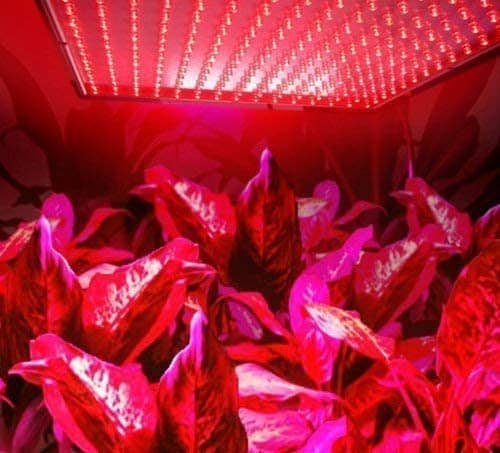
You’ll usually see red lights, but blue light can also be effectively used to grow indoor plants:
- Red lights – i.e. lights which mainly emit red wavelengths – helps a plant control how many leaves to produce, and how big the leaves should be. In this sense, red light is key for the foliage and fruiting stages.
- Blue lights – which emit mainly blue wavelengths – work in a similar way to how they effect humans: they help regulate the ‘day-night’ cycle, prompting plants to flower at the correct time.
Each light isn’t mutually exclusive, however: a combination of red and blue light can sometimes be best. A short research article on Harvard’s blog found that a mix of red and blue light helped strawberries to have different nutrients and taste, along with ripening faster or slower (depending on how much red vs blue light was used).
In-case you’re wondering, the other primary color – green – does not have any discernible impact on plant growth. It is mainly red and blue light that helps them grow the best.
Finally, the amount of time that the light is left on is also important:
| Plant type | Examples | Hours of light (per day) |
| Day neutral | Geraniums, violets and foliage plants. | Approx 12 hours |
| Shorter days | Begonias, chrysanthemus and azaleas | Less than 12 hours |
| Longer days | Cacti, vegetable seedlings and various garden flowers. | 14-18 hours |
This is interesting because you’ll naturally tend to see cacti in countries with lots of sun (and hence longer days, on average), and various ‘shorter day’ plants in countries heading towards the north pole (which have shorter days, on average).
In summary, indoor lighting is used to help simulate the type of light that usually comes through your windows, or streams into your garden on a sunny day. However because not every plant can be put by the window, and sometimes the weather is terrible, keen plant growers instead rely on indoor lighting to help regulate their plant growth and provide consistent daily light.
The Best Types Of Lights For Plant Growth
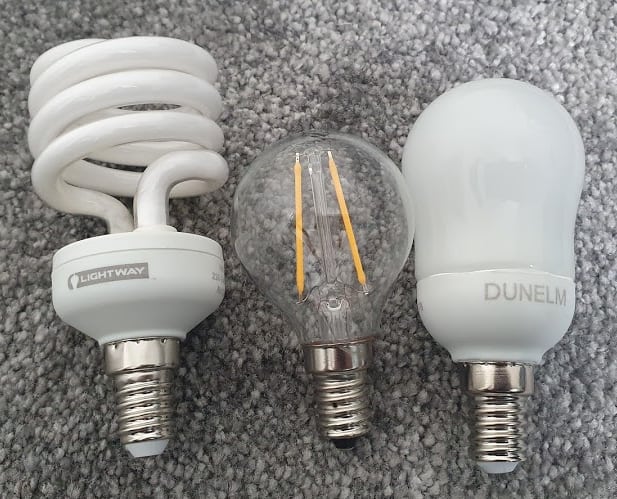
There’s quite a few different types of lights, and each can affect plant growth in different ways:
- Incandescent bulbs: these are the traditional light bulbs that you would have freely purchased for your house a decade ago. They emit a lot of light, using up a lot of energy in the process – and hence generating a lot of heat, too. They tend to give off more yellow/red type light.
They actually got banned throughout Europe around a decade ago, but can be easily purchased in some other countries. Since they give off so much heat, it’s not recommended that they are placed too close to plants otherwise they could damage plant growth. - Fluorescent light: you know the old, flickering strip lights in your school’s gymnasium? They are fluorescent lights, and they can also be purchased as compact light bulbs (CFL). These tend to give off mainly blue-wavelength light, although you can purchase cool or warm bulbs which then give off blue and red wavelengths.
They give off a lot of light without too much heat, so they can be an easy way of introducing light to a long row of indoor plants. - Halogen bulbs: These are a form of incandescent bulb, but one whose filament is filled with halogen (such as bromine or iodine). They give off a good range of color (hence wavelengths) to benefit plants, but they also give off a lot of heat and aren’t very energy efficient, so they’re usually best avoided for indoor plant growth.
- LED lights: these are the modern bulbs we all know and love (or loathe, if you liked the old-style ‘bright bulbs’!). Some LEDs give off blue light, others give off yellow/red light, others – like smart lights – are customizable to give a range of color options.
Many LEDs don’t give off massive amounts of light meaning that they aren’t always ideal for plant growth, but I’ll explore this point more in the next section. - HPS (high-pressure sodium) bulbs: HPS are a type of HID (High-intensity discharge) bulb, and they are often used specifically for plant growth. HPS bulbs give off more red light, and whilst they are very energy efficient, they are also powerful (requiring a separate ballast device, which is a bit like a transformer or controller) and hence not always cheap.
A starter HPS kit on Amazon is $150+, for example. - MH (metal-halide) bulbs: these are the other type of HID bulb, also energy efficient whilst still being powerful. They give off more blue wavelength light, but as with HPS bulbs, they are a more specialist option and you shouldn’t randomly buy an MH kit unless you know that you’ll need it and be using it properly.
Why Smart Bulbs (Usually) Aren’t Ideal For Growing Plants
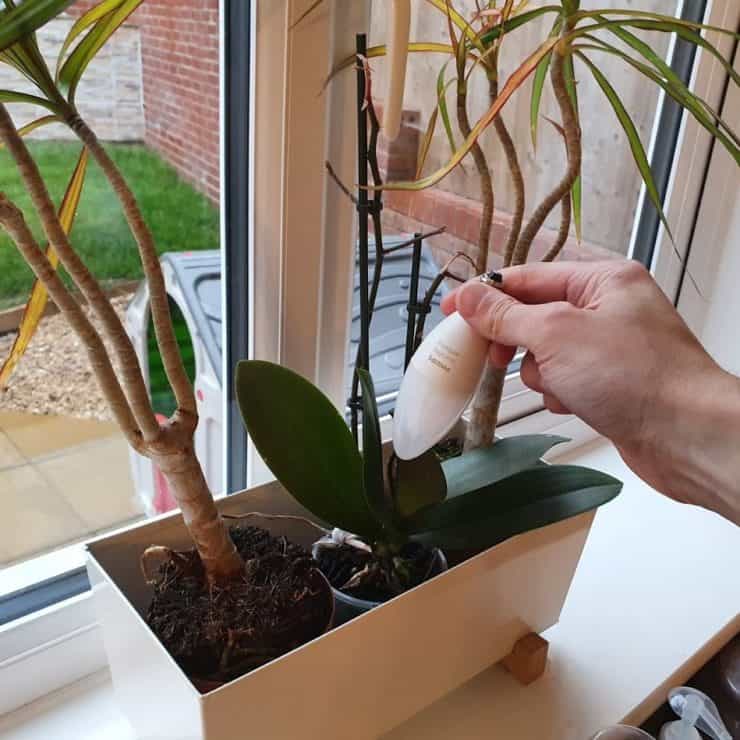
Smart bulbs are just LED bulbs with some extra (albeit fancy!) circuitry, and as I touched on earlier, LED bulbs usually aren’t great for growing plants. This is for two main reasons:
- Many LEDs lack overall power output. You’ll look at an LED and see that it says “5W, 40W equivalent“. What this means is that it shines as though it’s producing 40W of light (and hence heat), but it actually just consumes 5W of energy – hence producing a lot less heat, too.
This is great for most households because they produce a relatively large amount of light, but at a fraction of the energy cost. However it’s not great for plant growth, where the actual power output (and warm heat) is also important. - Many LEDs either produce yellow/red light, or blue light. It’s not often that they produce a full-spectrum of light wavelength.
As a result, you may need to ‘mix and match’ different LED bulbs to get both red and blue wavelengths, or alternatively purchase a horticulture LED light such as a square COB/bloom light which contains multiple bulbs.
Now smart bulbs do help to solve issue number #2) because you can program them to switch between red and blue lights. However you also introduce a new problem: cost. A single Philips Hue color bulb can cost you $45, and due to the lack of overall power output, you’ll probably need multiple of them.
Let’s say you purchase 3 of them: you will have paid $135. However this will produce less overall light than the $36 EZORKAS LED-based grow light which has loads of customization options and is much easier to use than syncing up multiple smart bulbs:
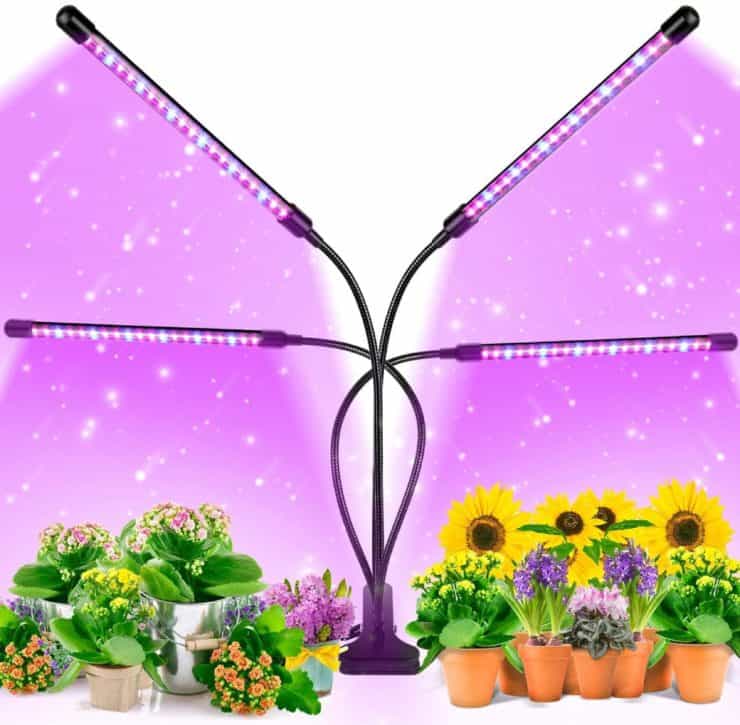
And that’s the main issue with using smart bulbs for plant growth: whilst the color-range is amazing for plants, the lack of overall power (by them being LEDs) means that you need to buy a lot of them – but then, price comes into it and you realize there’s cheaper options for your growing lighting.
Incidentally, Philips are actually working with an indoor plant farm in the Netherlands, providing them with lots of LEDs and running various experiments to maximise plant growth. So LEDs could well be the future for plant growth, just not with most current smart bulbs which are more ideal for household use than plant-growing use.
Smart Bulbs That Might Be Good For Plant Growing
As I discussed above, the main issue with smart/LED bulbs is that their overall lack of power output means that they aren’t ideal for growing plants.
However if you can get an ‘extra bright’ smart bulb, these will work fairly well for plant growth – just be careful of the cost, and only use them if you really think they bring benefit that other options on the market don’t.
LIFX
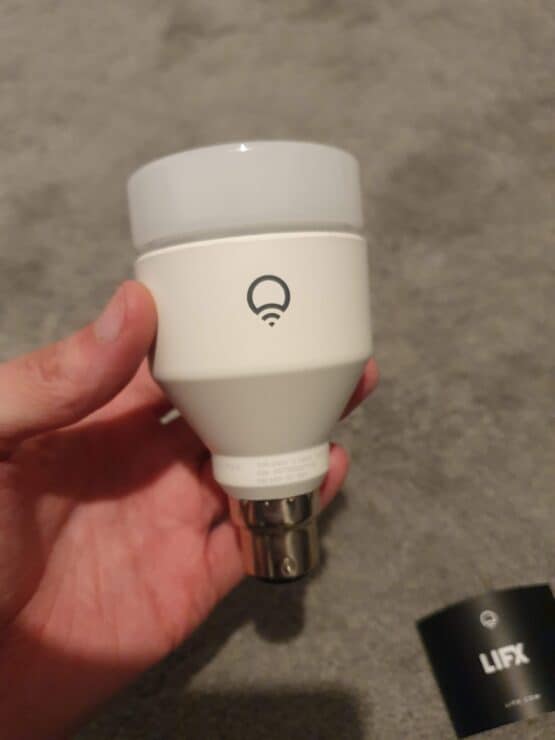
Anywhoo, with that said, LIFX smart bulbs are known to be some of the brightest available. Their current indoor bulb goes up to 1,100 lumens, using 17W and equivalent to a traditional 75W bulb.
This is very bright for a smart bulb although it does cost $55+. My main concern is – again – the price. Sorry to keep on about it, but the following bulb bought on a local shop cost me less than $5 – and it’s much brigther again!

Yes that particular bulb won’t produce the full wavelength of light to be ideal for plant growth, but a ‘full wavelength’ bulb wouldn’t cost me much more – and would then be perfect for plant growth, and give more power output than the most powerful smart bulb on the market right now.
Philips Wiz
Philips sell two main types of smart bulbs: a Wi-Fi-based bulb range called Philips Wiz, and a ZigBee-based range called Philips Hue (that I cover below).
Their color, 1,600 lumen bulbs should be plenty bright enough to help plants grow better, and in-fact Philips Wiz actually have a “Plant Growth” option within the app itself, which is pretty nifty. This emits a red-blue light which looks a little purple, and from what we’ve heard it seems to help smaller plants grow fairly well.
Philips Hue
To end on a somewhat positive/optimistic note, Philips Hue announced a bunch of ultra-bright 1,600 lumen bulbs back in 2020.
These are now available to purchase, although stock levels and the bulb format are limited, but if you see one that will work for you, these should work well enough for plant growth. They work out
The only downside is their price: the 1,600 lumen option can cost as much as $60 for a color bulb, compared to the standard 800-1000 lumen option which is often below $50 each.

The Philips Wiz bulb now has a full color changing WiFi bulb that is 1600lm for $22. So the price of LED bulbs have come down a lot in the last couple years.
That’s true, thanks for the comment. They are coming down quite a bit which is nice to see.
Really great article! Thanks for all the helpful information. I am trying out the Philips Wiz Bulb on the “plant growth” settings, which looks like its a mix of red and blue light… looks slightly purple. It’s just to supplement the window light for the plants in my basement bedroom.
Just as a side note… this paragraph was a little confusing:
“In-case you’re wondering, the other primary color – green – does not have any discernible impact on plant growth. It is mainly red and green light that helps them grow the best.”
Cheers!
Thanks for the comment Elysha. I hadn’t realised that Wiz offers a “plant growth” setting, that’s really awesome and I’ve updated the article now to mention that – thank you 🙂
Also good spot on the confusing paragraph, I’ve fixed that now.
Have you done any research using the IKEA TRÅDFRI smart bulbs? They are programmable to many colors. I am currently experimenting with them with plants in my basement. There are windows- but not a ton of natural light. We’ll see!
Thanks for the suggestion Mia. I’ve heard great things about them, but I haven’t done any hands-on testing. I’ll try and get hold of some soon, they do seem to offer some great products – plus it’s good that you can use the Hue app to control them.